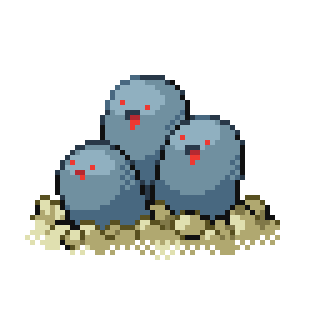Dust is a rewrite of du (in rust obviously) that visualizes your directory tree and what percentage each file takes up. But it only prints as many files fit in your terminal height, so you see only the largest files. It’s been a better experience that du, which isn’t always easy to navigate to find big files (or atleast I’m not good at it.)
Anyway, found a log file at .local/state/nvim/log that was 70gb. I deleted it. Hope it doesn’t bite me. Been pushing around 95% of disk space for a while so this was a huge win 👍


I usually use something like
du -sh * | sort -hr | less, so you don’t need to install anything on your machine.Same, but when it’s real bad sort fails 😅 for some reason my root is always hitting 100%
I usually go for du -hx | sort -h and rely on my terminal scroll back.
dust does more than what this script does, its a whole new tool. I find dust more human readable by default.
Maybe, but I need it one time per year or so. It is not a task for which I want to install a separate tool.
Perfect for your use case, not as much for others. People sharing tools, and all the different ways to solve this type of problem is great for everyone.
Almost the same here. Well,
du -shc *|sort -hrI admin around three hundred linux servers and this is one of my most common tasks - although I use -shc as I like the total too, and don’t bother with less as it’s only the biggest files and dirs that I’m interested in and they show up last, so no need to scrollback.
When managing a lot of servers, the storage requirements when installing extra software is never trivial. (Although our storage does do very clever compression and it might recognise the duplication of the file even across many vm filesystems, I’m never quite sure that works as advertised on small files)
What do you use for management? Ansible? Puppet? Chef? Something else entirely?
Main tool is Uyuni, but we use Ansible and AWX for building new vms, and adhoc ansible for some changes.
Interesting; I hadn’t heard of Uyuni before. Thanks for the info!
We’d use
du -xh --max-depth=1|sort -hrInteresting. Do you often deal with dirs on different filesystems?
Yeah, I was a Linux System Admin/Engineering for MLB/Disney+ for 5 years. When I was an admin, one of our tasks was clearing out filled filesystems on hosts that alerted.
Sounds pretty similar to what I do now - but never needed the -x. Guess that might be quicker when you’re nested somewhere there is a bunch of nfs/smb stuff mounted in.
We’d do it from root (/) and drill down from there, it was usually /var/lib or /var/logs that was filling up, but occasionally someone would upload a 4.5 GB file to their home folder which has a quota of 5 GB.
Using ncdu would have been the best way, but that would require it being installed on about 7 thousand machines.
Or head instead of less to get the top entries
With sort -hr, the biggest ones are generally at the bottom already, which is often what most people care about.
I’d say head -n25 instead of less since the offending files are probably near the top anyway